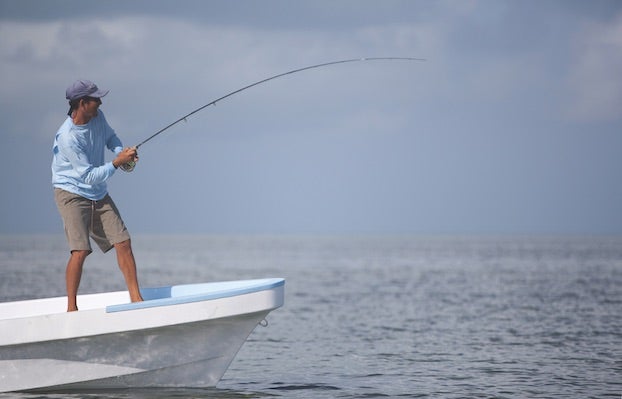Short and pricey crawfish season possible this year
Published 3:53 pm Tuesday, January 16, 2024

- More than 300 Jeff Davis Parish area senior citizens enjoyed crawfish, door prizes and fellowship Friday during the Council on Aging's annual crawfish boil in Lake Arthur. (Doris Maricle / American Press Archives)
Last year’s drought and this week’s below-freezing temperatures could affect the number of crawfish available for harvest this season, when crawfish can be harvested, how long they’ll be available, as well as the size of each crawfish and the price per pound.
But two Beauregard Parish crawfish farmers cautioned consumers to hold on just a minute before being discouraged by price forecasting. One farmer with 30 years experience said it’s too early to predict price or anything else. Give it another month.
Boiled crawfish lovers eagerly anticipate the first pinch, pull and taste of the season’s first perfectly seasoned mudbugs. They’ll get theirs, even if it’s necessary to consume less to adjust for possible price hikes.
LSU AgCenter Extension AgentTodd Fontenot said Louisiana has 350,000 acres devoted to crawfish farms. Jeff Davis is the parish with the most farms. Allen Parish has increased its crawfish farming acreage most recently as those farmers leave soybean production behind.
Of the 350,000 acres farmed in the state, about 90,000 acres did not get “flooded up for crawfish production,” Fontenot said. That could have consequences.
For one thing, the lack of rain meant poor forage conditions. Crawfish eat the stubble left from rice farming. The ponds that did get flushed due to drought conditions, might have been flushed with surface water that was saltier because of a lack of rain. Rice is tolerant of saltwater. Small crawfish are not.
High temperatures and lack of rain could have also caused the burrows to crack or cause the plugs to become so baked they were difficult or impossible to remove until the rains finally came. Development was delayed or mothers could have eaten their young to survive.
Fontenot has seen some one-quarter-of-an-inch long crawfish that could have possibly just emerged. “It takes good growing temps to get a crawfish to marketable size,” he said. “We had decent weather in October, November and December, but this week’s cold conditions could slow down production.”
All market farming involves risk, Fontenot said. Nature isn’t the only factor. Farming is a business and it has been impacted by inflation and manufacturing and distribution hiccups just as any other business.
“Crawfish boats cost more, fuel is more expensive, the migrant worker wage increases every year. Years ago, the crawfish produced lagniappe income. Farmers didn’t invest a whole lot. Even the drought conditions meant additional expense, for instance fertilizing the stubble.”
Fontenot said some boiled crawfish lovers will fork out the money for market rate. They love crawfish that much.
During crawfish season, Melonee Cooper of DeQuincy and her husband, Tim, eat boiled crawfish once a week in a DeQuincy restaurant “that has really good crawfish.” The prices are competitive, and it’s close.
“We love it enough that, unless there is a severe shortage that causes the price to go way beyond $6-$7 per pound, we will eat it. Groceries, as a whole, are much more expensive than they were this time last year. I don’t know what price to expect.”
She was invited to her first crawfish boil when she was a high school student, and she was hooked.
“I can out-peel anyone I know,” she said. “I have a method and am usually the person sitting and waiting for the rest of the table to finish. A friend taught me the accordion push-pull method: (1) You take the whole mudbug, head in one hand, tail in the other, belly facing down. (2) Push the tail into the body until the layers of armored shell collapse into the body, then pull out. (3) Gently bite the small piece of meat exposed and pinch the tail. The meat should just pop into your mouth. No muss. No fuss.”





